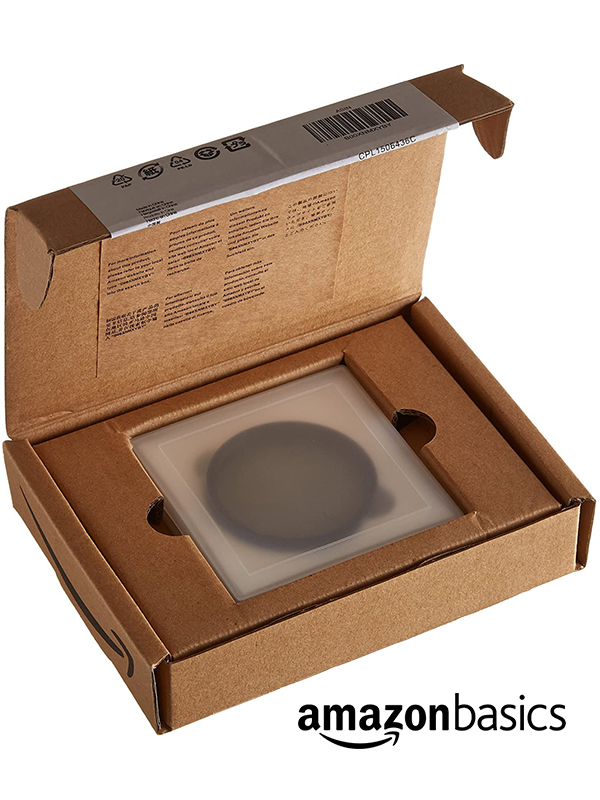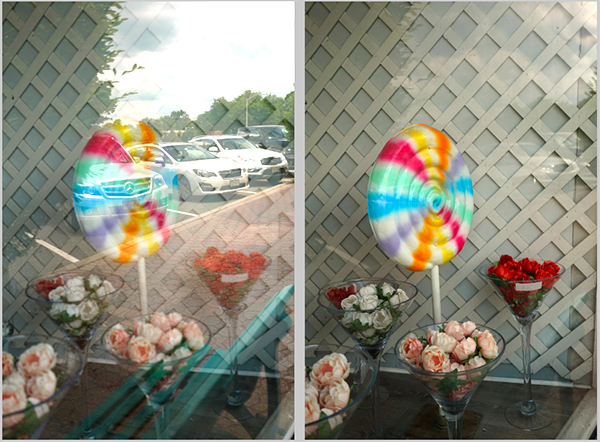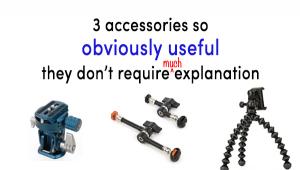$8 Circular Polarizer (67mm) from Amazon Review

I ordered a circular polarizing filter in 67mm size from Amazon. The price was $7.99. Two days later I was outside shooting through the new CP filter in all of the traditional polarizer situations. The last previous time I bought a polarizer it cost more than $50. So what did I discover? Was this deal a Bargain or Bagel?

The line between finding a bargain and foolishly throwing money away runs thick or thin depending on the stakes. Eight bucks is a very low entry fee to enjoy the drama of investigating an alleged Circular Polarizing filter. I mean, it’s not like leaping from an airplane wearing a $2 parachute, right? So I dialed my Expectations down to Low and pondered, “How bad can it be?”

Before we go any further, this CP filter is available from Amazon for $7.99. If this particular SKU is no longer available, poke around a bit and you’ll find various sizes of Amazon Basics Circular Polarizers at prices ranging between $10 and $18.

What Does a Polarizer Do?
Ask any experienced photographer what a polarizer is for and you get an answer something like this: “Removes glare, darkens blue skies, enhances colors and lets you see underwater.” To that I add that a pol makes clouds pop, functions as an emergency Neutral Density (ND) filter and cuts reflections from windows.

The single biggest benefit is the CP’s ability to remove surface glare from things like plant leaves so that we can photograph the true, rich, living color.
Many of these things cannot be done during post processing in Photoshop (because you cannot accurately add large patches of data that was never there). That’s what makes this glass filter so valuable, and why every photographer should own one.

How Polarizers Work
When light reflects off the surface of an object, it scatters in an infinite number of directions. Flatter surfaces, like ponds and windows, reflect a fair portion of the light waves along more-or-less parallel paths.
We perceive the parallel waves as glare. Glare causes shiny reflections from the surface of water or a glossy car fender—and blown-out highlights in your digital image. Although the light waves are moving along similar paths, their energy is scattered perpendicular to their axes.
What a polarizing filter does is really very simple: it blocks the parallel waves and thereby blocks the glare. This allows us to see the object more purely. In the case of water, if we cancel the glare on the top layer we can see beneath the surface. Fish hate polarizers.

Polarizing filters are constructed using two stacked rings. One ring is threaded and attaches to the camera lens; the other ring holds the glass which contains microscopic (and perfectly aligned) particles that prevent polarized light waves from passing through when oriented in the appropriate direction.

The strength of the effect, i.e., the amount of glare blocked, is adjusted by rotating the polarizer. In one position the maximum amount of glare is canceled. In another position, the glare is intensified.
The decision how to set the polarizer is made subjectively by the photographer while viewing the subject through the lens with polarizing filter attached. In other words, you rotate the filter until things look the way you like, then shoot the image. This also means that—if you want to—you can use said polarizer to make things worse intentionally.

Polarizers Are Not Perfect
Because they prevent some light from passing through, all polarizers require an increase in exposure. The metering system in your camera should automatically compensate so you don’t need to reset anything, but you stand to lose about one f/stop (one EV).
The filter factor (i.e., required exposure increase) for the Amazon CP filter, according to my Gossen Luna-Pro handheld light meter, is 2X, which is one f/stop. This tells me that the filter density is on par with other CP filters.
More weaknesses, pol filters have little or no effect in the dark, or on cloudy days, or most of the time when used with indoor lighting.

Build Quality
My new Amazon $8 Circular Polarizer is clearly worth the price and more. Made of glass and metal (as opposed to plastic and plastic) the construction level is quite acceptable. Frankly, I’m impressed.
Performance of the $8 CP Filter
The images scattered throughout this story confirm that the $8 CP successfully performed all of the functions normally expected of a circular polarizing filter. This filter removes glare, darkens blue skies, enhances colors and lets you see underwater. It also makes clouds pop, functions as an emergency Neutral Density (ND) filter and cuts reflections from windows.

I did some informal sharpness testing by shooting finely detailed subjects with and without the cheap filter. I did not observe any discernible loss in image sharpness. Oh, there easily could be some degradation at the corners or extreme edges, but performance was well within my requirements.
Conclusion
On the plus side, the Amazon $8 polarizer does everything a polarizer is supposed to do.

On the negative side, the filter introduces a definite color cast. In a perfect world, a polarizer should increase saturation without causing any sort of color shift. In the case of this sample, the color is rendered warmer (slightly brownish). It’s not necessarily a deal breaker, but it’s annoying.

The mounting ring of the $8 Amazon filter is also rather thick by modern standards. Today’s CP filters are usually thinner so that they do not vignette (darken corners) when used on wideangle lenses.
In the final analysis, the Circular Polarizer from Amazon is a genuine bargain. It is available from Amazon for $7.99. Will it be my everyday filter that I use unhesitatingly? Nope. I’ll buy a 67mm Heliopan or, if I can find one, a Cokin Pure Harmonie. But as a filter to learn from, or for casual use, this $8 thrift piece can’t be beat.
—Jon Sienkiewicz
(As an Amazon Associate, Shutterbug earns from qualifying purchases linked in this story.)

















































